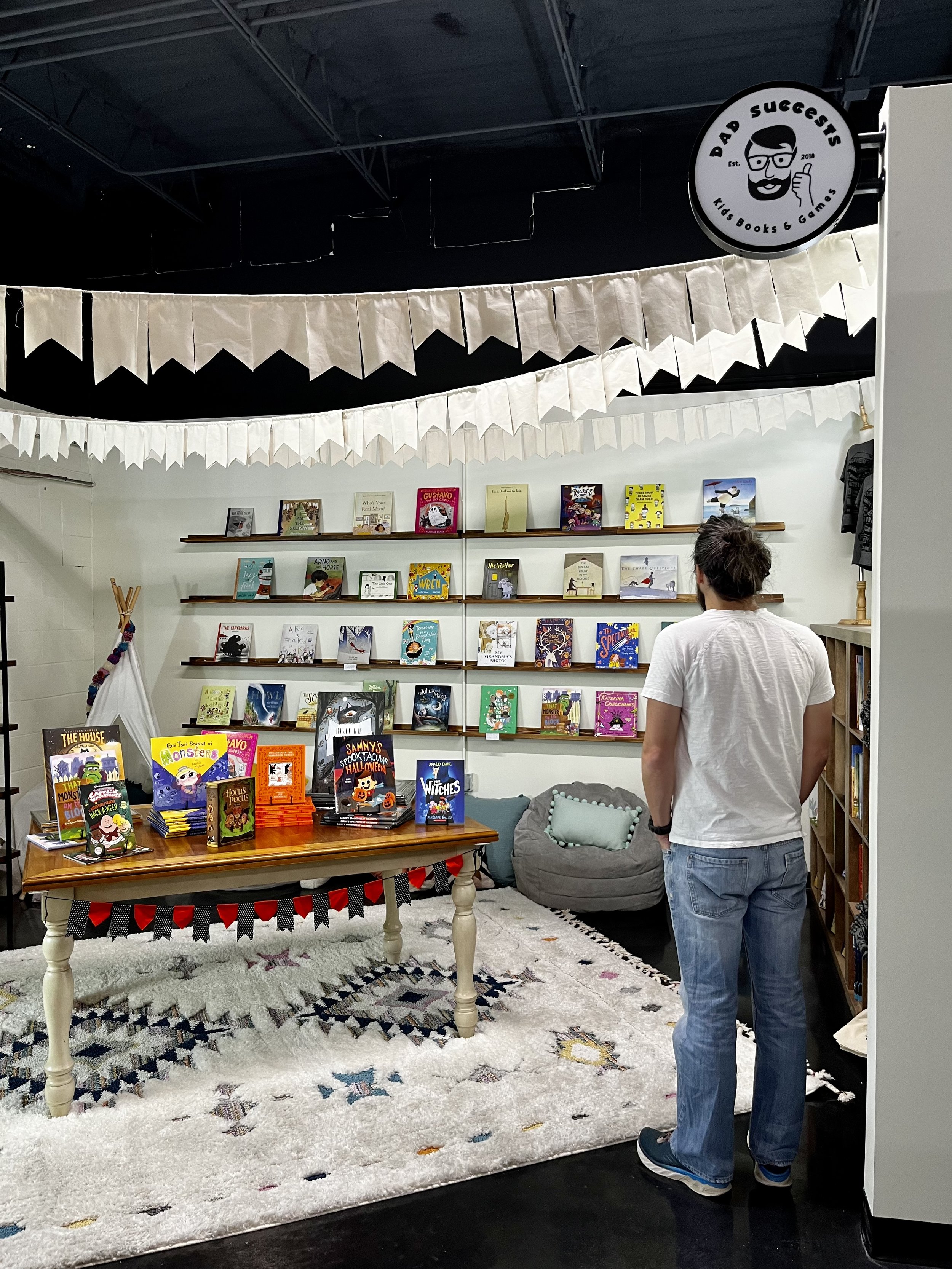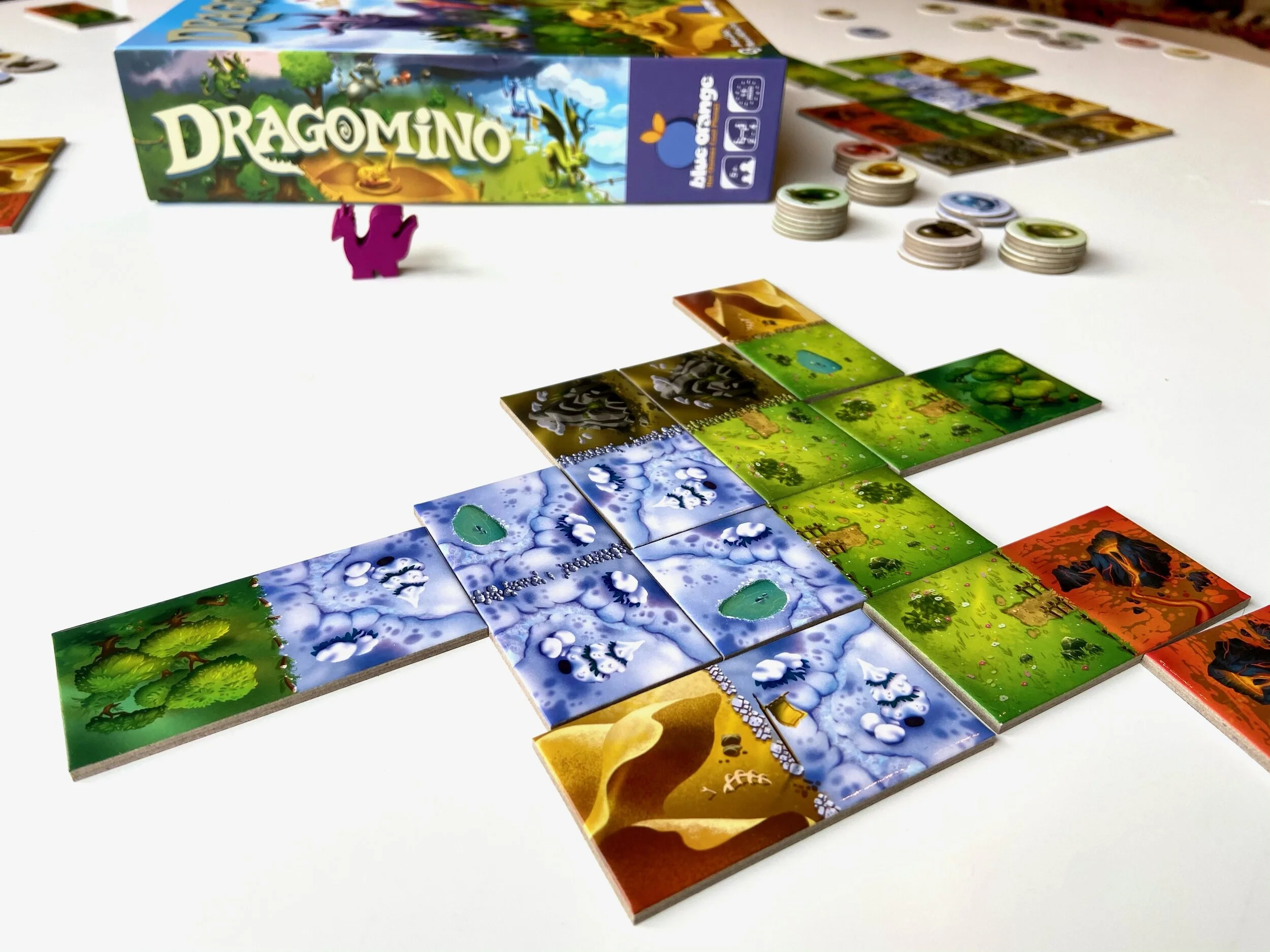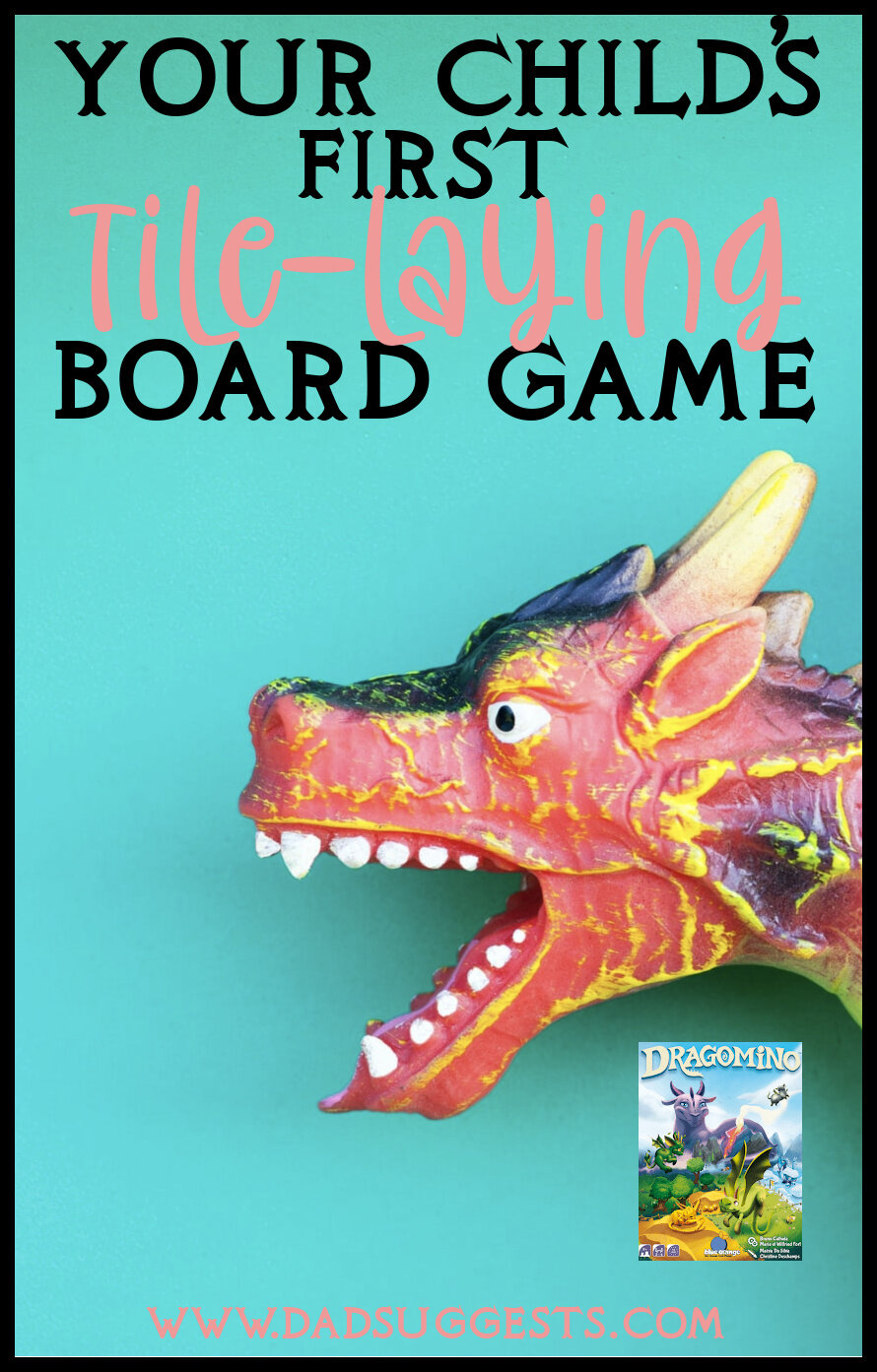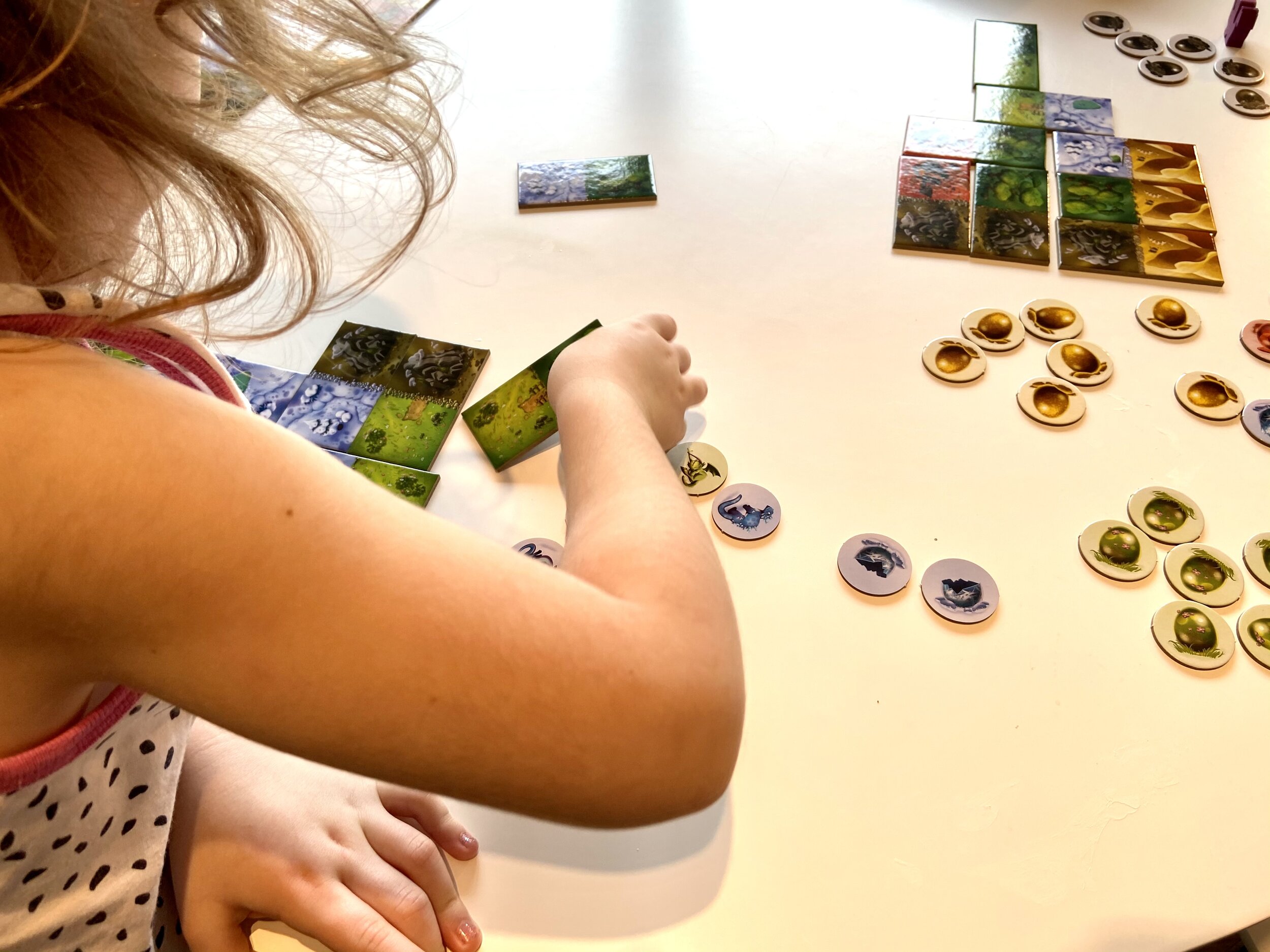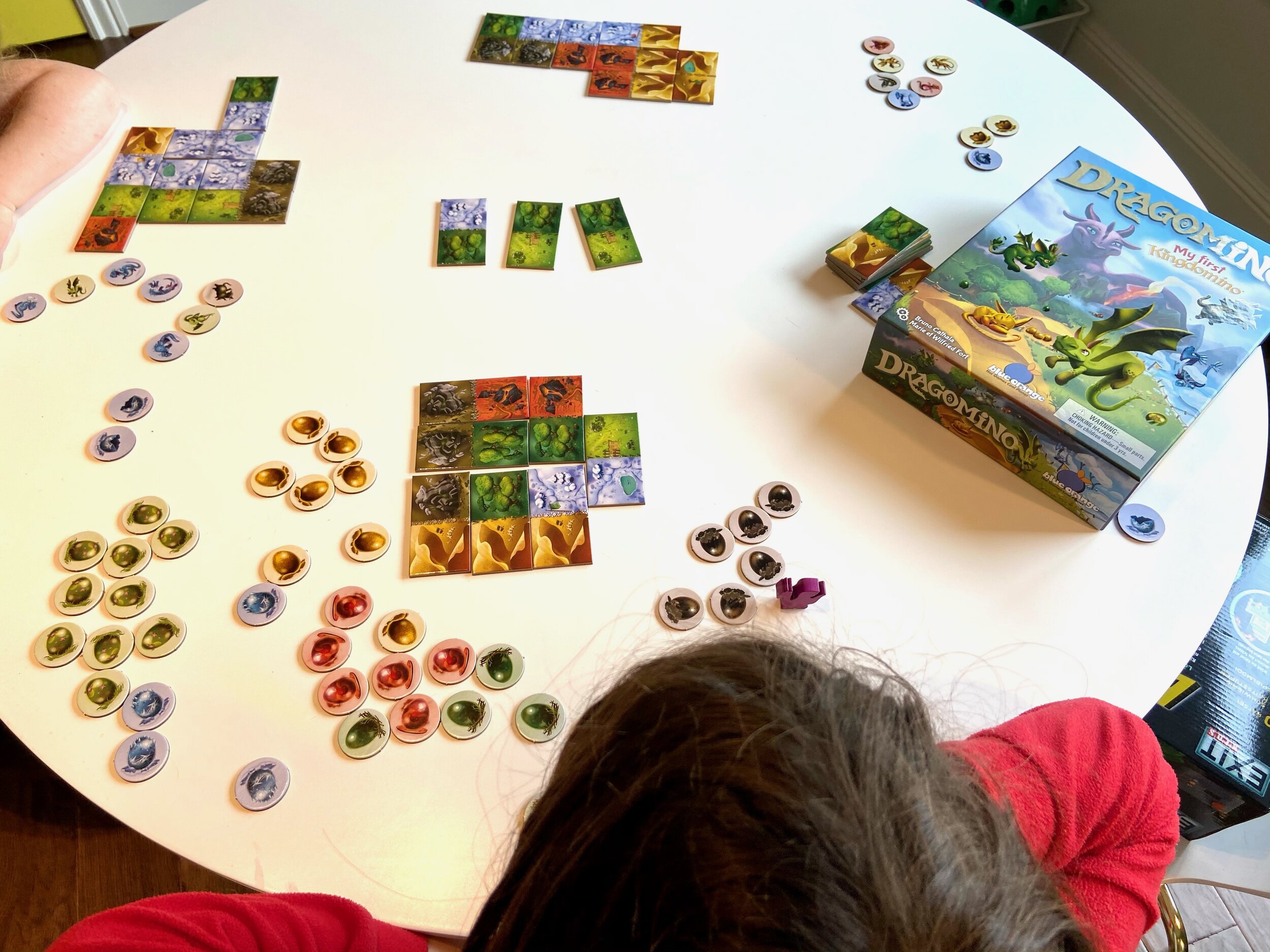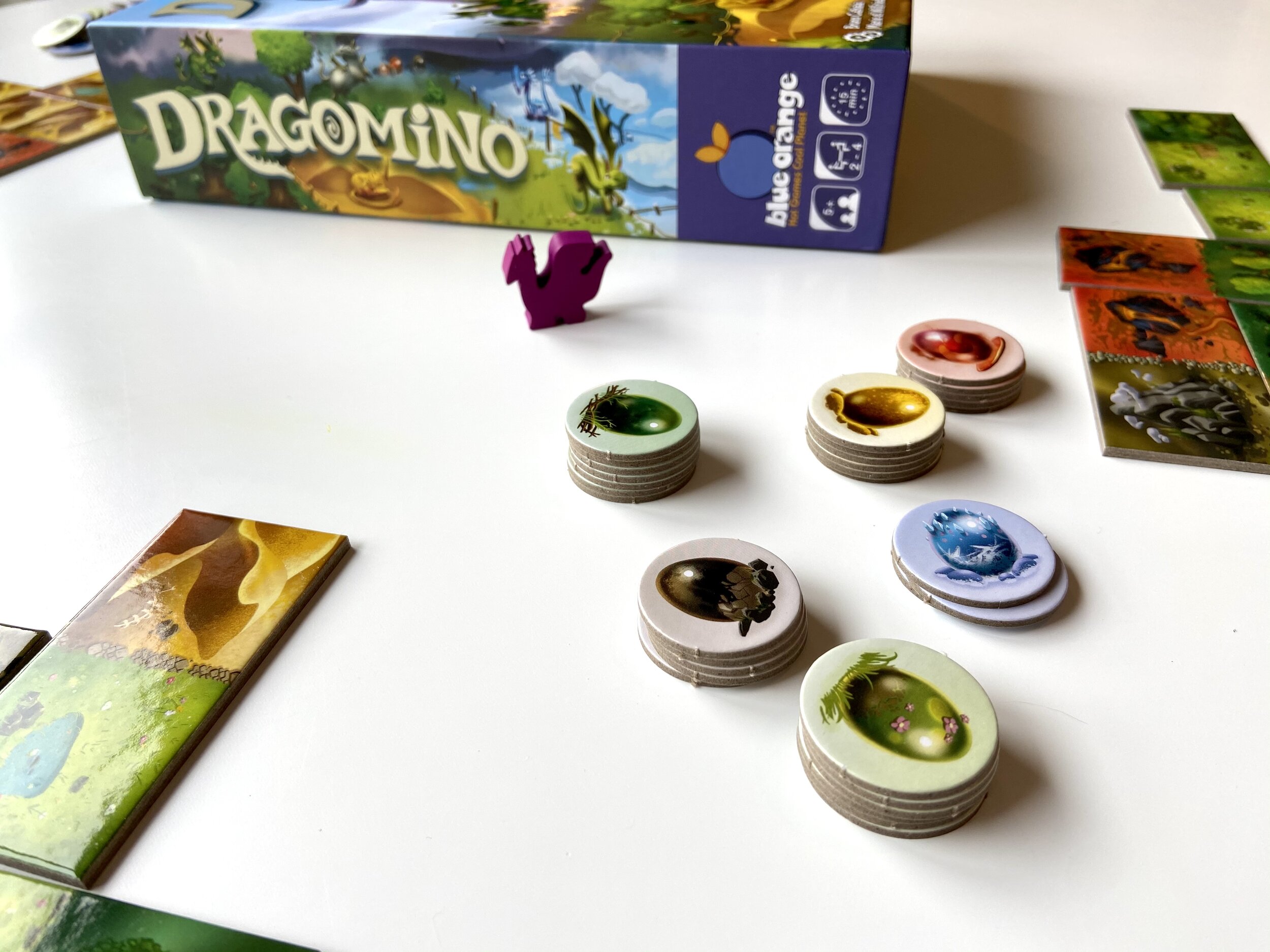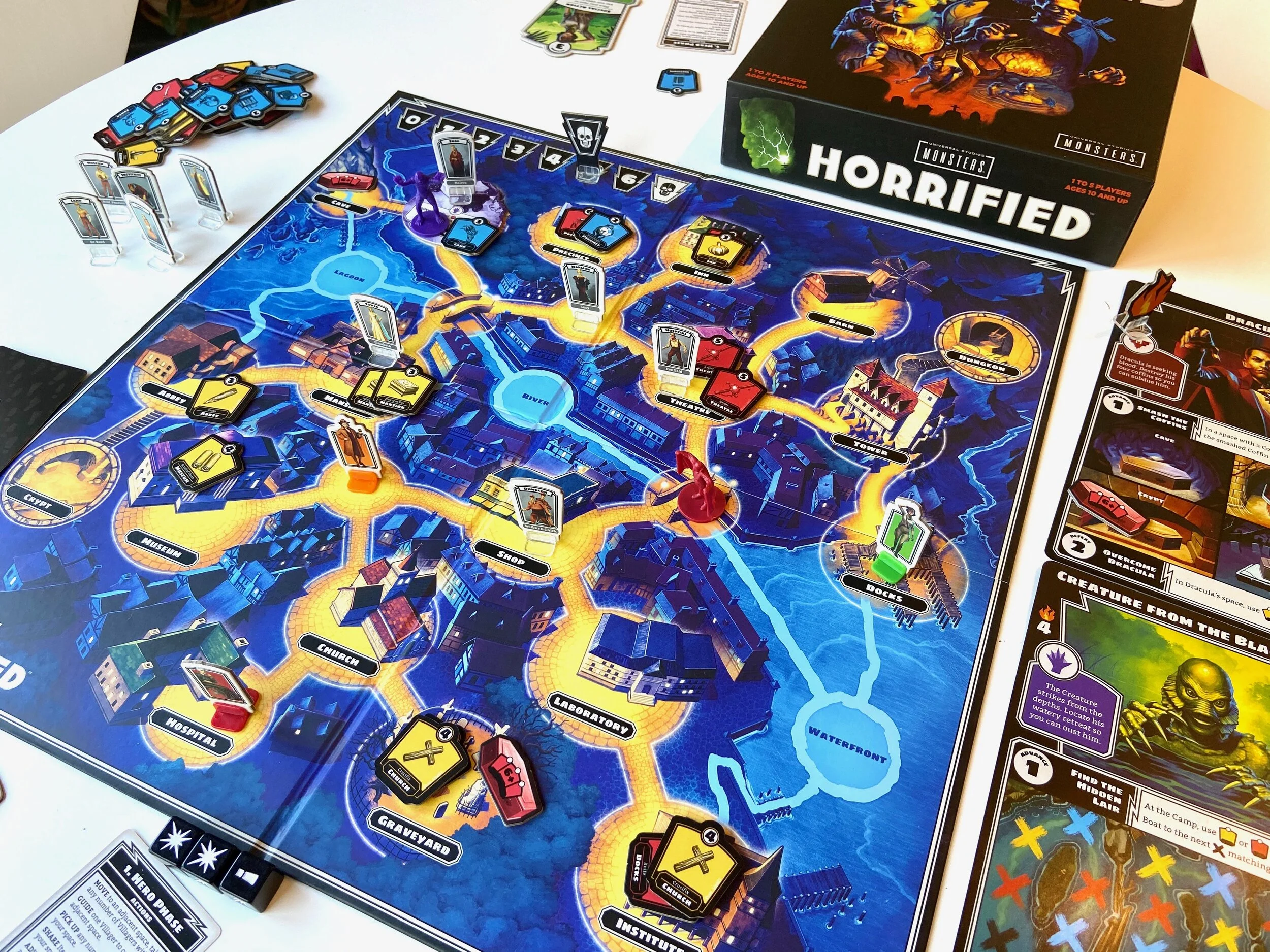Dragomino: Your Child's First Tile-Laying Game
Kingdomino won the Spiel des Jahres (the most prestigious Game of the Year prize in the world) back in 2017, and it’s still one of the most popular, far-reaching board games out there right now. It’s one of those games that’s interesting, challenging, and engaging - but it’s also pretty intuitive and easy to teach to almost anyone. That’s why I’ve always thought it makes for a great Thanksgiving kind of game with the extended family - but, unfortunately, it does leave out the youngest members of the family.
If you’re unfamiliar, Kingdomino is a tile-laying game where your pieces connect similar to dominoes as you try to build a 5x5 kingdom. The rules aren’t difficult, but when you consider the fact that you have to keep track of constructing a 5x5 grid, while simultaneously trying to maximize your score in a multiplication-based scoring system - it’s easy to see how it still leaves out pretty much any kids younger than 6 or 7.
Back in the old days, we would most assuredly just have to wait several years to introduce Kingdomino to our 4-year-old. But board games for kids have truly seen a renaissance in the last decade or so. Specifically in that previously empty space between the ages of 4 and 8. Long gone are the days of merely playing simple games like Candy Land or Sorry for years and years - until you can finally grasp the skills needed for a game like Clue.
To prove my point, it’s become a very welcomed trend to take a popular board game and release a junior version. And now the makers of Kingdomino have given us Dragomino - our Game of the Month. We’ve written about our favorite junior version of board games in the past, and Dragomino is most certainly going to be added to that illustrious list. Our favorite junior versions of games truly make up some of our favorite board games in our collection, and it’s because they take beloved ideas and make them accessible to the whole family.
Like good teachers of young children, they take tricky concepts and introduce them in a bite-sized, easy-to-understand format. They serve as a bridge to more complicated games down the line, and they’re indispensable for gameschooling families. Oftentimes we ignore the fact that kids still need to be taught the abstract rules and concepts that we adults take for granted in board games. So games like Dragomino actually end up serving a very useful purpose.
There are many differences between Kingdomino and Dragomino, but first and foremost, it allows our 4-year-old daughter to play with the whole family. And, even though he’s able to play and understand Kingdomino, our 8-year-old son still truly loves to play Dragomino too. The dragon theme is fantastic, and the strategy is sufficient enough to keep him invested, and you simply can’t underestimate how valuable a game that appeals to the entire family is.
The primary ways that Dragomino simplifies itself is eliminating three specific concepts from Kingdomino. No longer do you have to keep track of a 5x5 grid or the multiplication-based scoring system - and you aren’t even forced to connect matching tiles. Of course you still want to connect matching tiles to score points, but you technically have the freedom to place your tiles wherever you want.
In this way, Dragomino simplifies itself to a game all about matching and spatial awareness. If you match two land types together, you earn a dragon egg. If there’s a baby dragon inside the egg, you earn 1 point. You’re also able to earn more than one egg on a turn, if the tile you placed in your exploration zone happens to make more than one matching connection at the same time.
Like Kingdomino, each round sees 4 tiles placed in the center of the board to choose from. And, when it’s your turn, you have to pick the most useful tile for you, and place it in the most beneficial spot on your board. Planning ahead is minimized, but not entirely eliminated. Much more important is choosing the best tile for that exact moment, and scoring as many eggs as possible each turn. So it’s clear to see how much more accessible it is for the little ones.
And like all good games these days, Dragomino comes with a recommended variant to add a little complexity as well. If you want to take things up a notch, there are tiles that feature watering holes that can be used for earning a bonus egg. Details like this definitely keep games interesting as we grow, challenge our 8-year-old, and make sure we’ll be coming back to it for a long time.
Both of our kids really love the theme in Dragomino too. They love the Mommy Dragon wooden token - and they love collecting and flipping over the dragon eggs to find out if there’s a baby inside. I’m sure you’re well-aware already how important theme is for engagement. And I probably don’t need to tell you that our 4-year-old could easily spend the entire time making the Mommy Dragon talk to her babies.
Dragomino most certainly does its part in continuing the family games renaissance taking place. Introducing abstract concepts to young kids is more accessible and more fun that ever before - and attractive and elegant games like Dragomino prove that it’s by no means impossible to find games that the entire family can enjoy.
Have you played Dragomino yet? What’s your favorite junior board game that brings the whole family together? Let us know in the comments!
